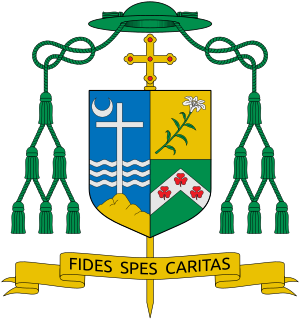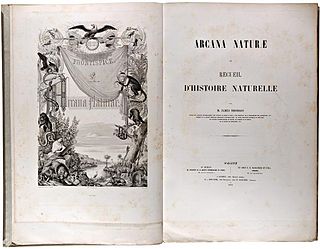
Adam of Bremen was a German medieval chronicler. He lived and worked in the second half of the eleventh century. Adamus is most famous for his chronicle Gesta Hammaburgensis Ecclesiae Pontificum.

The Liber Pontificalis is a book of biographies of popes from Saint Peter until the 15th century. The original publication of the Liber Pontificalis stopped with Pope Adrian II (867–872) or Pope Stephen V (885–891), but it was later supplemented in a different style until Pope Eugene IV (1431–1447) and then Pope Pius II (1458–1464). Although quoted virtually uncritically from the 8th to 18th century, the Liber Pontificalis has undergone intense modern scholarly scrutiny. The work of the French priest Louis Duchesne, and of others has highlighted some of the underlying redactional motivations of different sections, though such interests are so disparate and varied as to render improbable one popularizer's claim that it is an "unofficial instrument of pontifical propaganda."

Pope Alexander IV was Pope from 12 December 1254 to his death in 1261.

Pope Simplicius was pope from 468 to his death in 483. He was born in Tivoli, Italy, the son of a citizen named Castinus. Most of what is known of him personally is derived from the Liber Pontificalis.
Plainsong is a body of chants used in the liturgies of the Western Church. Though the Catholic Church and the Eastern Orthodox churches did not split until long after the origin of plainsong, Byzantine chants are generally not classified as plainsong.
William of Malmesbury was the foremost English historian of the 12th century. He has been ranked among the most talented English historians since Bede. Modern historian C. Warren Hollister described him as "a gifted historical scholar and an omnivorous reader, impressively well versed in the literature of classical, patristic and earlier medieval times as well as in the writings of his own contemporaries. Indeed William may well have been the most learned man in twelfth-century Western Europe."
Quintus Fabius Pictor was the earliest Roman historiographer and is considered the first of the annalists. He was a member of the Senate, and a member of the gens Fabia.
While a papal oath can be any oath taken by a pope, such as that which Pope Leo III took on 23 December 800 at a council held in Rome in the presence of Charlemagne declaring himself innocent of the charges brought against him, the term is used in particular for the "Papal Oath" that some Traditionalist Catholics say was taken by the popes of the Catholic Church, starting with Pope Saint Agatho who was elected on 27 June 678. They claim that over 180 popes, down to and including Pope Paul VI, swore this oath during their papal coronations. Pope John Paul I, Pope John Paul II, Pope Benedict XVI, and Pope Francis who had no coronation ceremonies, did not take the oath, and some Traditionalists interpret this fact negatively, even to the point of declaring them to be false popes.
Indult Catholic was a traditionalist Catholic loaded term used from the early 21st century until 2007 as a pejorative label applied to Catholics who attended only the licit celebrations of the Tridentine Mass in Latin according to the 1962 edition of the Roman Missal and regulated by the local bishop through an indult that conformed to the 1984 Congregation for Divine Worship and the Discipline of the Sacraments norms in the ecclesiastical letter Quattuor abhinc annos.
Ecclesia Dei is the document Pope John Paul II issued on 2 July 1988 in reaction to the consecration of four bishops despite an express prohibition by the Holy See. It said that the two consecrating bishops and the four priests they consecrated were excommunicated. John Paul called for unity and established the Pontifical Commission Ecclesia Dei to foster a dialog with those associated with the consecrations who hoped to maintain both loyalty to the papacy and their attachment to traditional liturgical forms.
Quattuor abhinc annos is the incipit of a letter that the Congregation for Divine Worship and the Discipline of the Sacraments sent on 3 October 1984 to presidents of episcopal conferences concerning celebration of Mass in the Tridentine form.

Gesta Hammaburgensis ecclesiae pontificum is a historical treatise written between 1073 and 1076 by Adam of Bremen, who made additions (scholia) to the text until his death . It is one of the most important sources of the medieval history of Northern Europe, and the oldest textual source reporting the discovery of coastal North America.
Summorum Pontificum is an apostolic letter of Pope Benedict XVI, issued in July 2007, which specified the circumstances in which priests of the Latin Church may celebrate Mass according to what he called the "Missal promulgated by Blessed John XXIII in 1962", and administer most of the sacraments in the form used before the liturgical reforms that followed the Second Vatican Council.
Saint Ælfgifu of Shaftesbury, also known as Saint Elgiva was the first wife of Edmund I, by whom she bore two future kings, Eadwig and Edgar. Like her mother Wynflaed, she had a close and special if unknown connection with the royal nunnery of Shaftesbury (Dorset), founded by King Alfred, where she was buried and soon revered as a saint. According to a pre-Conquest tradition from Winchester, her feast day is 18 May.
The Gesta Pontificum Anglorum, originally known as De Gestis Pontificum Anglorum and sometimes anglicized as The History or The Chronicle of the English Bishops, is an ecclesiastical history of England written by William of Malmesbury in the early 12th century. It covers the period from the arrival of St Augustine in AD 597 until the time it was written. Work on it was begun before Matilda's death in 1118 and the first version of the work was completed in about 1125. William drew upon extensive research, first-hand experience and a number of sources to produce the work. It is unusual for a medieval work of history, even compared to William's other works, in that its contents are so logically structured. The History of the English Bishops is one of the most important sources regarding the ecclesiastical history of England for the period after the death of Bede.

David J. Malloy is an American prelate of the Roman Catholic Church who serves as the ninth Bishop of the Diocese of Rockford, Illinois.
Tragocephalini is a tribe of longhorn beetles of the Lamiinae subfamily. It was described by Thomson in 1857.

Callimation is a genus of longhorn beetles of the subfamily Lamiinae, containing the following species:
Armatosterna castelnaudi is a species of beetle in the family Cerambycidae. It was described by Thomson in 1865, originally under the genus Callimation. It is known from South Africa, Botswana, the Democratic Republic of the Congo, Burundi, Zimbabwe, and Gabon.

Callimation venustum is a species of beetle in the family Cerambycidae. It was described by Félix Édouard Guérin-Méneville in 1844. It is known from Madagascar. It contains the variety Callimation venustum var. obscurum.









